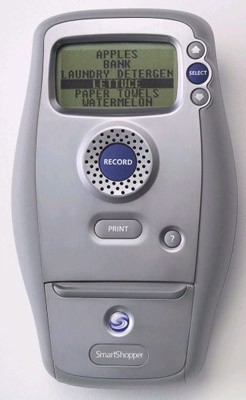If you want to watch your friends hyperventilate, just suggest that someday soon marketers will be monitoring their behavior on their cell phones, both in terms of buttons pressed on the device, and places the device is carried. Be kind, though. Resist the temptation, and don’t add that it may already be happening. Right now.
And so you don’t freak out right along with your friends, let me reassure you of two things:
- I am not doing this monitoring. No way. Honest.
- Those who are don’t care about you. They use totally anonymous data.
They have no interest in what you’ve been up to — if it doesn’t involve legal commerce. Ultimately, all they want to do is make your cell phone more valuable in your pursuit of the next purchase.
Mediapost recently interviewed GoTo CEO Lee Hancock about the future of behavioral targeting in the mobile phone space.
He talks about a world where your cell phone serves up relevant ads and opportunities the same way that (for example) Gmail, the email account from Google, serves us ads based on keywords embedded in our messages. In both cases, an automated process eavesdrops on you to a certain extent, but only in the service of customizing the user experience. It’s a good thing. And, I’m sure, this cell phone behavioral profiling will be something consumers can opt out of once it is refined and deployed for real.
How would this particular type of monitoring improve a cell phone experience? Here is Mr. Hancock’s example:
One way [that] interest, behavior and location [data] could work seamlessly together is: Say someone has downloaded Madonna song ringtones and goes to the movie menu frequently. An entertainment company promoting a new Madonna movie can target based on that content and behavior, but also focus on the specific movie theater near where that user is. Then a Starbucks nearby having a special Frappuccino offer can target their promotion or a Barnes and Noble nearby the theater can promote a new Madonna coffee-table book. Very powerful stuff, but obviously something that needs to be done responsibly.
My take on this is that it shows promise, but I wonder how these messages will be presented to the user. We know that cell-based ads are not drawing strong responses when they are embedded in a phone’s web browser. And I, for one, would not want an SMS (text message) ad showing up on my cell phone every time I pass a Starbucks or music store. No, I need to initiate the suggestion process and be ready to consider the opportunities it presents.
A Modest Proposal
What if my cell phone had a single, additional button. When pressed, it “rewards” me. The reward it sends my way would be customized, as Hancock describes, based both on my behavior and where I am physically.
Please bear with me a moment. I’m going to make another Google comparison to illustrate my point.
When that search engine was new, it usually delivered more relevant and correct search results than competing search engines, including the goliath Yahoo! directory.
Google was boastful. The search page ballyhooed this advantage by providing two “Search” buttons. These buttons remain to this day. One delivers the top ten results, as most other search engines do. The other button is called, “I’m Feeling Lucky.” It takes you to the top result. Period. If you’re disappointed, you always have the “Back” button. But more often than not — especially back then, when the web was a smaller and simpler place — you got what you wanted.
That Google button is not something I use, but I’m sure for many it is like the food lever in Skinner’s classic box we learned about is Psych 101. That lever delivered a pellet of food each time it was pressed. It trained lab mice to associate a reward with this action.
Now imagine I’m the mouse — er — consumer. I’m in a mall, let’s say, and I’ve got a few minutes to kill before my wife returns from a shopping sortie. And I figure: What the heck. I press the button on my phone … the “I’m Feeling Lucky” button. And I receive via SMS a list of offers that I am likely to welcome. I may even act on one or two of them.
Will this be a game-changing feature on my phone? No.
But like Dr. Skinner and those lab mice, the behavioral targeting geniuses will have caused me to associate the gathering of this type of data with a positive outcome: The delivery of customized goodies that I truly welcome.
The “Lucky” button will connect me in a far richer way with my surroundings. I’ll receive merchants’ offers, yes, but also, possibly, news about nearby friends who have also opted into the system, or even tips on events in the neighborhood that may have passed my notice.
I like it. The button feels right to me.
How about to you?
Would you press such a button? Are you feeling lucky?
 Voice recognition seems to be a theme in my life lately. I just finished setting up
Voice recognition seems to be a theme in my life lately. I just finished setting up 
 Yesterday Steve Jobs showed off Apple’s long-rumored mobile phone. The
Yesterday Steve Jobs showed off Apple’s long-rumored mobile phone. The